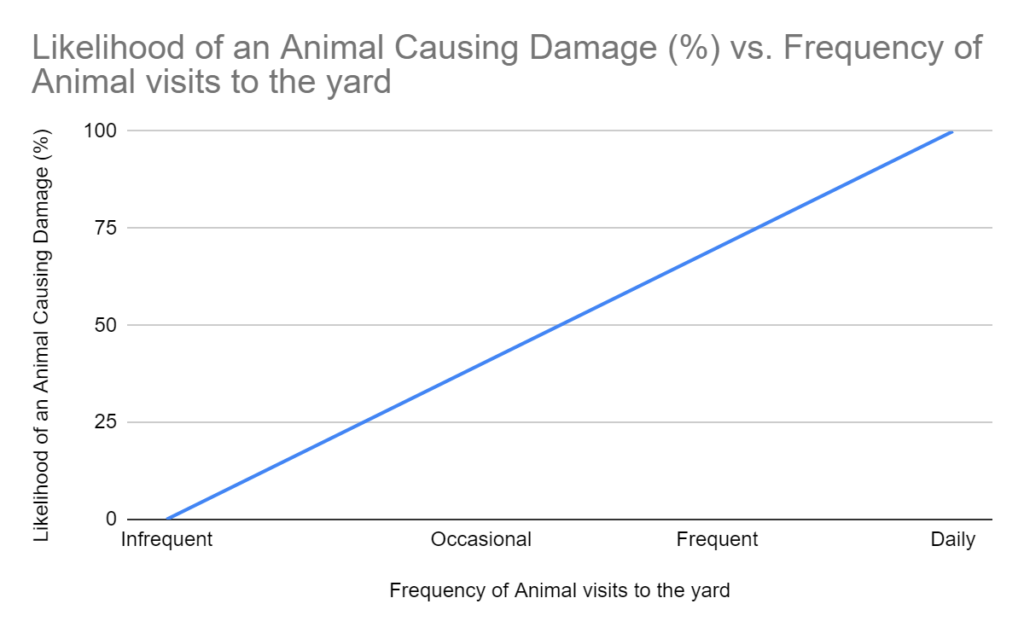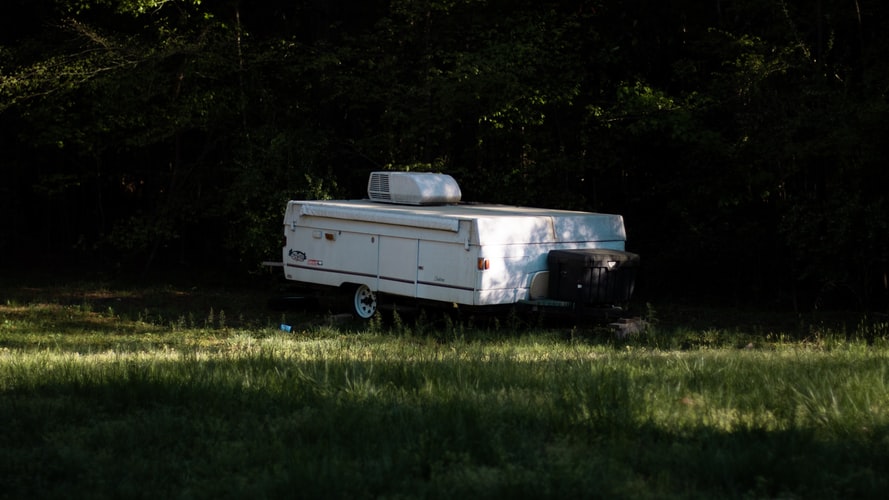Wildlife around your home and yard can be a beautiful sight… when at a distance.
Animals in the immediate vicinity of your home, however, are more likely to become a nuisance. More time spent in the immediate proximity of your home increases the likelihood of your home being damaged.
Wildlife invaders can range from infrequent to daily. These animals can be deer, coyotes, squirrels, birds, woodpeckers, beaver, muskrat, or many other types of wildlife. Some of these species become habituated to an area or a home, and will return time and again. There is a direct correlation between the amount of time animals spend around your home and the likelihood in which they will damage your yard or home.

Preventing Unwanted Wildlife Activity Near Your Home
Elimination and prevention of the conditions conducive to animal survival is a crucial step in the Integrated Pest Management (IPM) process following the proper identification of the offending wildlife species. IPM is a decision making tree beginning with an inspection and the determination of the proper steps needed to address a pest or wildlife issue, then it employs them from the least impactful treatment option working the way up. For wildlife professionals, habitat modification is a vital component of this process.
Three things that all animals require to survive are:
- Food
- Water
- Harborage
Understanding the importance of this triad is integral to efficiently preventing wildlife activity in your yard. Through decreasing the availability of any of these items, we make the area less attractive to the offending animal. However, this does not mean they will never enter your yard again, especially when the activity is transient (the animal lives elsewhere and travels through the yard to access food, or water).
DIY Homeowner Tips For Integrated Pest Management
Remove Food Sources
- Fruit/ seeds: Homes that have trees and landscape plants with naturally occurring food sources have a higher incidence of wildlife activity in their yard. Fruit-bearing trees provide easily accessible food sources early in the season. As fruit begins to fall to the ground, additional wildlife species will gain access to the fruit, increasing the amount of animal activity. Keeping the ground clear of this fallen food and/or removing the plant/s entirely, will aid in decreasing animal activity.
- Bird Feeders: Elimination of bird feeders is ideal due to the food source it provides to other animals. If a bird feeder is being used, place it at a distance from the home and ensure the remnants of the feeder that fall to the ground are picked up consistently to decrease rodent activity.
- Insects: When insects are present in the structure, woodpeckers may habituate to the structure for a food source. Treatment of the invading insect will decrease the availability of the food source and subsequently decrease appeal the bird has to seek food acquisition at that home.
- Garbage Cans: Secure in a structure or bungee cord the lid shut to prevent raccoon access.
- Gardens: Fencing off gardens to prevent animal intrusion, covering bulbed plants prior to the plant sprouting, and netting off vegetables to prevent bird damage to the plants are all helpful in protecting your garden from foragers.
- Pet Droppings: Ensure all pet droppings are picked up consistently to prevent other animals from utilizing this as a food source – especially flies.
Decrease Moisture
- Gutters: Clean the gutters to ensure water hitting your home’s roof travels to the downspout and drains away from the home. When gutters have a buildup of organic material, water backup can lead to rot, mold, and insect issues. Over time, these issues can compromise the structural integrity of the fascia/ soffit area and create conditions ripe for animal attic entry.
- Pet Dishes: Make sure to store pet dishes empty when they’re not being used in order to limit animal and insect activity.
- Standing Water: Eliminate items in the yard that can capture and hold water, or turn them to prevent standing water accumulation.
- Proper watering of yard: Preventing over watering limits excess moisture, thereby limiting mosquito breeding or animal drinking water.
Remove Harborage
- Leaves/Deadfall: Remove leaves and downed trees to minimize rodent harborage and conditions conducive to insect reproduction.
- Grass: Mowing the lawn consistently, and to a shorter height, minimizes harborage areas for rodents and snakes.
- Wood piles: Move wood piles away from the home. These are great harborage and breeding areas for pests and wildlife.
- Yard Clutter: Minimize items being stored in the yard to limit harborage and water accumulation.
- Prevent Animal Access: The areas underneath sheds, outbuildings, decks, boats and campers are all prime harborage areas for rodents, snakes and wildlife. Ensuring they cannot access these areas limits overall activity in your yard.
Prevent Harborage: Exclusion as IPM
Exclusion is an integral part of preventing wildlife damage to your home and yard. It can come in the form of fencing a garden to prevent deer or rabbit damage to vegetables, filling foundation gaps to prevent wall void nesting by deer mice, and countless other forms.
Properly identifying areas that are susceptible to animal harborage and exploitation can help homeowners avoid a future property damaging wildlife interaction, thereby decreasing the financial impact wildlife can have on a homeowner.
Decrease Access: Make Travel Difficult
- Trim tree branches that are overhanging the roof
- Keep surrounding landscape plants trimmed/ well maintained
- Create a 12-18” harborage free zone around the home (no brush/ shrubbery/ stored items)
Deter Activity: Make the yard scary or unappealing
- Natural plants that deter the offending animals
- Frightening devices
Population Reduction
- Physical removal of the offending species using legal techniques
Keep Your Yard Free Of Nuisance Animals
If you’re wanting to keep wildlife away from your yard so they don’t cause damage to your property, following these steps is a great step forward. However, if you’re wanting a professional to complete these tasks and you live in the Twin Cities, MN metro area, contact the exclusion specialists at Abra Kadabra Environmental Services. Our team is highly experienced in implementing IPM and will help get rid of the wildlife issues you’re experiencing.







